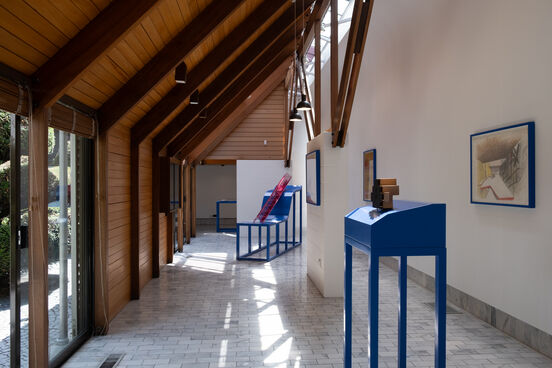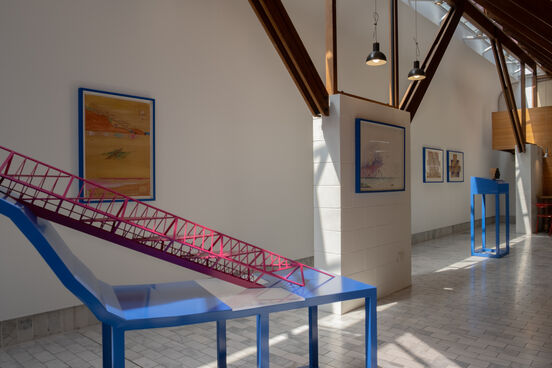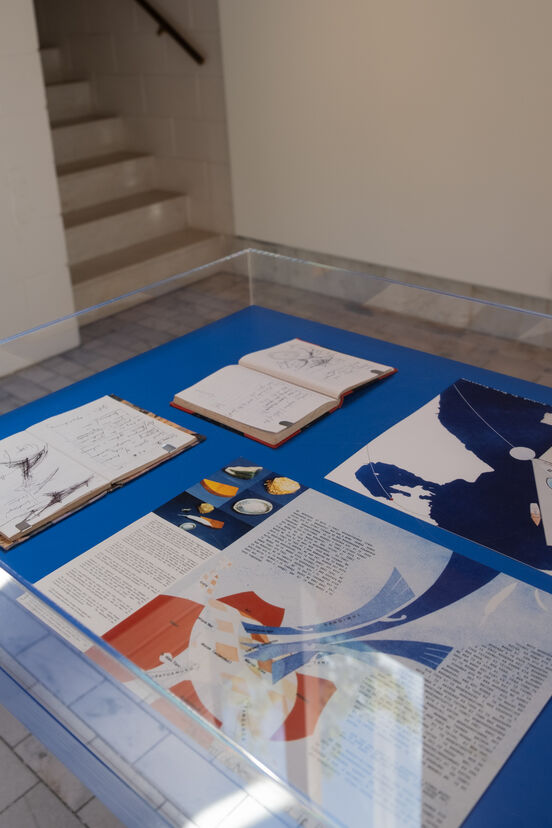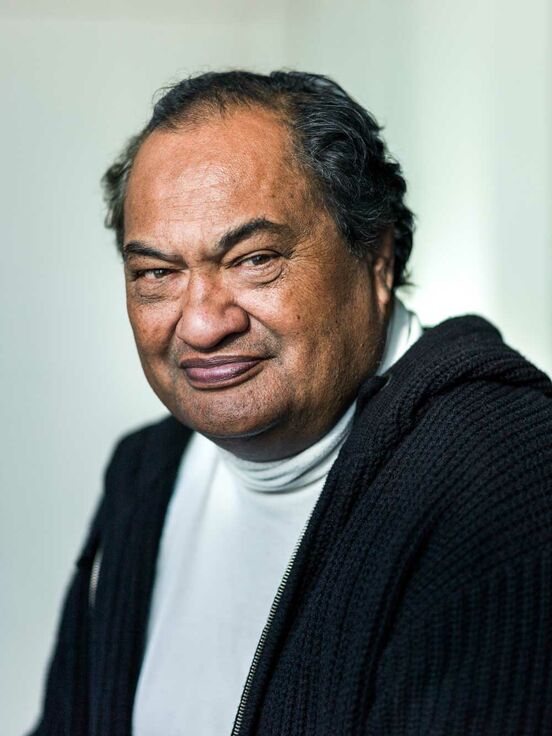Rewi Thompson (Ngāti Porou, Ngāti Raukawa; 1953–2016) saw architecture as an act of imagination generated by the land, an opportunity to create post-colonial possibilities that were fundamentally connected to place.
His built structures, which include Wellington’s City to Sea Bridge and Te Puukenga at Unitec, are rich in metaphor and poetic detail. His own house in Tāmaki Makaurau’s Kohimarama presents a blank ply face to the street – evidence of what Rewi’s inventive vision could raise into reality, and prompting provocative questions about suburban land occupation.
Trained as a structural engineer before he went to architecture school, Rewi was as comfortable with the pragmatics of structure as he was with the possibilities of the architectural imagination. His graduation project, the Ngāti Pōneke Marae, takes the traditional functions of a marae and stacks them vertically in a structure that rises from the waters of Wellington Harbour and rests on the side of Tangi-te-keo Mount Victoria.
Other drawings from his archives at the University of Auckland – discovered in an undated folder labelled KOHA – feature prismatic buildings on water, a Tyrannosaurus rex, totemic structures rising from the sea while birds swirl through a sunset sky.
These dreamscapes – imagined and real, buildable and less so – are a manifestation of architectural possibility, collectively showing how Māori design concepts should never be locked in associations with the past but can generate a vision of a positive post-colonial future.
KOHA: The speculative worlds of Rewi Thompson was originally exhibited at Objectspace in Tāmaki Makaurua Auckland to coincide with the launch of a new publication by Jade Kake and Jeremy Hansen titled Rewi: Āta haere, kia tere.
—
Architect and adjunct professor of architecture Rewi Thompson (Ngāti Porou, Ngāti Raukawa; 1953 – 2016) has profoundly influenced a generation of architects in Aotearoa. Originally trained as an engineer at Wellington Polytechnic, Rewi subsequently studied architecture at the University of Auckland before establishing his own practice in 1983. Notable projects include the terraced Wiri State Housing precinct (1986–89), canopies at the Ōtara Town Centre (1987), City to Sea Bridge (1990–94), Puukenga, the School of Māori Studies at Unitec in Tāmaki Makaurau Auckland (1991), and his own home in Tāmaki Makaurau’s Kohimarama (1985). Rewi created, consulted on and contributed to many of Aotearoa’s significant architectures, advocating for the prioritisation and enactment of mātauranga Māori into the fields of architecture and design. In 2002 he was appointed an adjunct professor at the University of Auckland’s School of Architecture and Planning, where he continued to shape architectural thought through teaching and the development of Te Pare (The Threshold), a culturally responsive curriculum. Although sadly missed, he leaves us a kete (repository) of remarkable buildings, influential graduates and profound ideas.
Jade Kake (Ngāpuhi, Te Whakatōhea, Ngāti Whakāue) is an architectural designer and writer. She is the founder of Matakohe Architecture and Urbanism, a Kaupapa Māori architecture studio, and a part-time lecturer at Huri Te Ao School of Future Environments at Auckland University of Technology Te Wānanga Aronui o Tāmaki Makaurau. She is the author of Rebuilding the Kāinga: Lessons from Te Ao Hurihuri (Bridget Williams Books, 2019) and has contributed articles and chapters to magazines and books on housing, architecture and urbanism. She is a two-time winner of Te Kāhui Whaihanga New Zealand Institute of Architects’ Warren Trust Awards for Architectural Writing.
Jeremy Hansen is the co-author (with Jeremy Salmond and Patrick Reynolds) of Villa: From Heritage to Contemporary (Godwit, 2009), and editor of Modern: New Zealand Architecture from 1938 to 1977 (Godwit, 2014). For 11 years he was the editor of HOMEmagazine. He was also the editor of Paperboy, a free Auckland weekly magazine, from 2016 to 2018. He has been a contributor to Metro, North & South, New Zealand Listener and The Spinoff, and to US-based Architectural Record and Dwell magazines. He now works as a placemaker and facilitator of arts and culture projects in Tāmaki Makaurau Auckland’s Britomart precinct.
—
KOHA: The speculative worlds of Rewi Thompson is presented by Architectus and supported by The Warren Trust.



Installation views of KOHA: The speculative worlds of Rewi Thompson at Sir Miles Warren Gallery, photographs by Natalie Bascand

Portrait of Rewi Thompson by Jane Ussher

